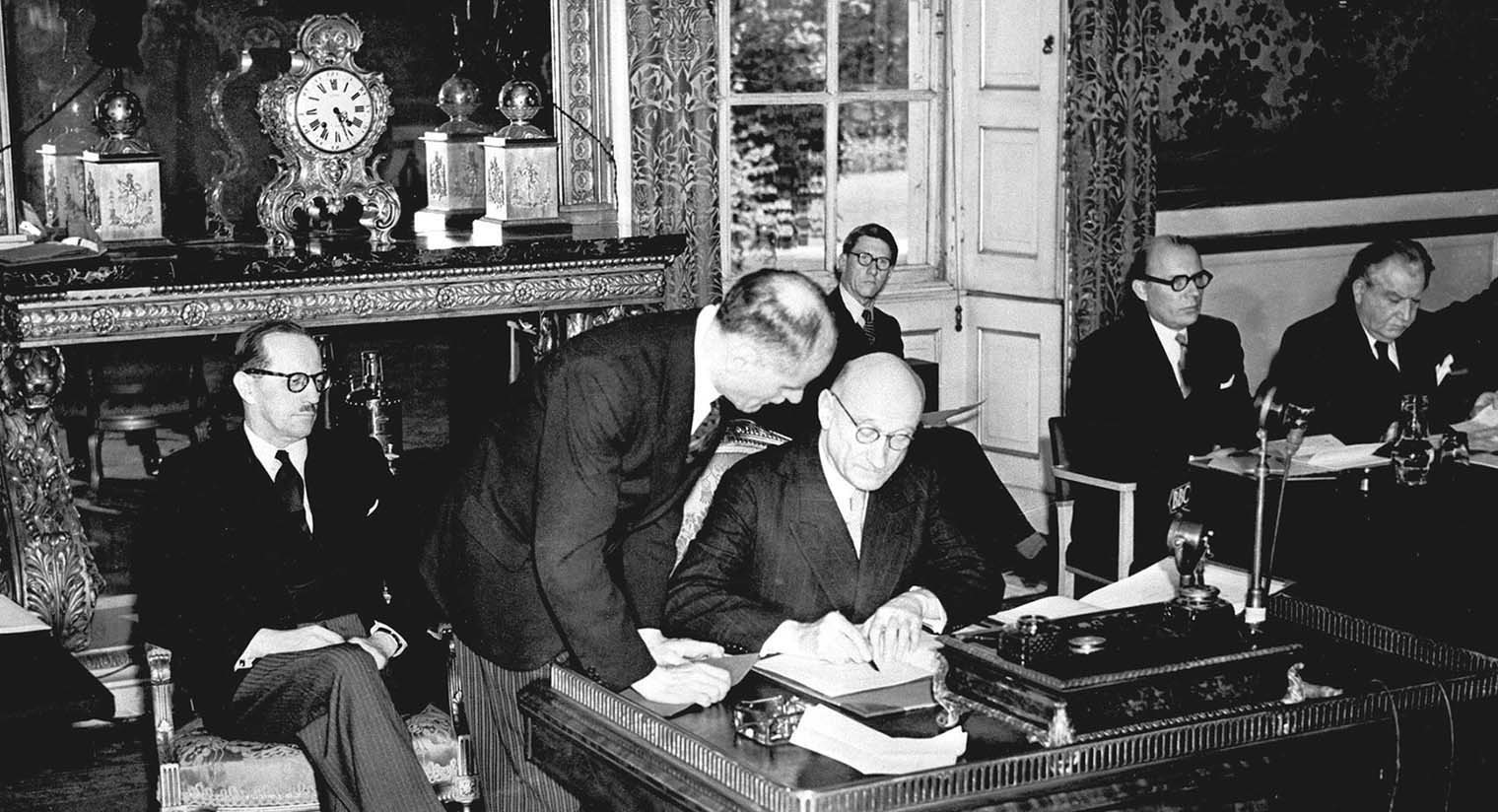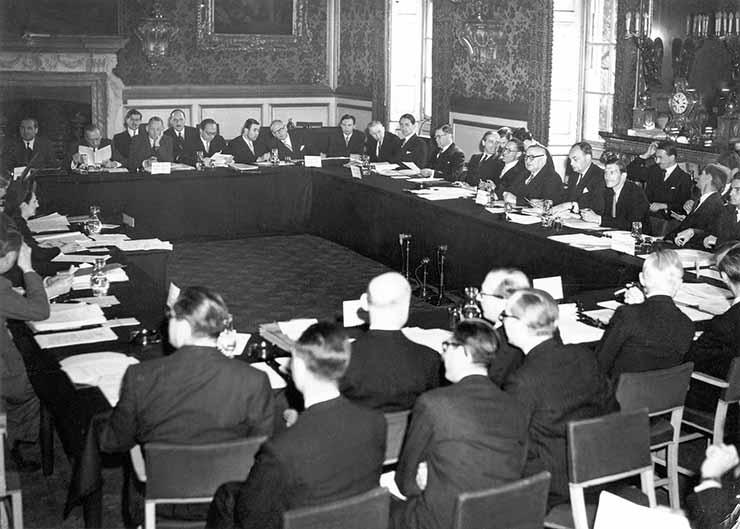Asset Publisher

Statute of the Council of Europe is signed in London
On 5 May 1949, at St James’s Palace, London, the Foreign Ministers of Belgium, Denmark, France, Ireland, Italy, Luxembourg, the Netherlands, Norway, Sweden and the United Kingdom signed the Treaty establishing the Council of Europe.
That moment marked a true diplomatic first. Countries that had only recently lived through a devastating world war were coming together to form a political institution with an ambitious aim: ‘to achieve a greater unity between its members for the purpose of safeguarding and realising the ideals and principles which are their common heritage and facilitating their economic and social progress’. It was the first time that governments and parliamentarians had come together, and, as British Foreign Minister Ernest Bevin told the assembled ministers, “This agreement lays the foundations of something new and hopeful in European life. We are witnessing today the establishment of a common democratic institution on this ancient continent of Europe.” See the British Pathé film of the event.

Ideas for some sort of council of Europe had been circulating for a number of years. Europe had seen centuries of strife and war, and both politicians and everyday citizens were looking for some way to prevent any new descent into conflict. Many activists joined grassroots organisations such as the European Movement; many of Europe’s leading politicians began to lobby for a new institution. At the forefront was former British Prime Minister Winston Churchill, who, as early as 1942, had expressed his hope “that the European family may act unitedly as one under a Council of Europe,’ an aspiration that crystallised in his 1946 speech in Zürich when he called for ‘a sort of United States of Europe’. (Listen to the speech)
It was an idea whose time had come. In May 1948 nearly eight hundred delegates from all over Europe and from all sides of the political spectrum attended a congress in The Hague where the idea of a European assembly was mooted for the first time, along with plans for a charter of human rights and a court to enforce it. Then the serious discussions began. France and Belgium made proposals to Luxembourg, the Netherlands and the United Kingdom for a European assembly which would have a consultative role and be responsible for representing the views of the European public. Britain wanted a body where members were appointed by governments. The two positions were reconciled by combining both a ministerial committee endowed with the power to take decisions and a consultative assembly whose members were to be appointed in accordance with their own government’s procedures, the prototypes of today’s Committee of Ministers and Parliamentary Assembly.
